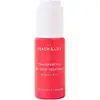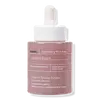What's inside
What's inside
 Key Ingredients
Key Ingredients

 Benefits
Benefits

 Concerns
Concerns

No concerns
 Ingredients Side-by-side
Ingredients Side-by-side

Helianthus Annuus Seed Oil
EmollientMacadamia Ternifolia Seed Oil
EmollientAscorbyl Tetraisopalmitate
AntioxidantLimnanthes Alba Seed Oil
Skin ConditioningSimmondsia Chinensis Seed Oil
EmollientCamellia Sinensis Seed Oil
HumectantSqualane
EmollientSodium Acetylated Hyaluronate
HumectantHydrolyzed Hyaluronic Acid
HumectantGlycyrrhiza Glabra Root Extract
BleachingTocopherol
AntioxidantFerulic Acid
AntimicrobialSodium Hyaluronate
HumectantTranexamic Acid
AstringentKojic Dipalmitate
Emollient1,2-Hexanediol
Skin ConditioningWater
Skin ConditioningHelianthus Annuus Seed Oil, Macadamia Ternifolia Seed Oil, Ascorbyl Tetraisopalmitate, Limnanthes Alba Seed Oil, Simmondsia Chinensis Seed Oil, Camellia Sinensis Seed Oil, Squalane, Sodium Acetylated Hyaluronate, Hydrolyzed Hyaluronic Acid, Glycyrrhiza Glabra Root Extract, Tocopherol, Ferulic Acid, Sodium Hyaluronate, Tranexamic Acid, Kojic Dipalmitate, 1,2-Hexanediol, Water
Water
Skin ConditioningCaprylic/Capric Triglyceride
MaskingAscorbyl Tetraisopalmitate
AntioxidantRosa Canina Fruit Oil
EmollientGlycerin
HumectantSqualane
EmollientTocopheryl Acetate
AntioxidantBisabolol
MaskingDictyopteris Polypodioides Extract
EmollientEthylhexylglycerin
Skin ConditioningHelianthus Annuus Seed Oil
EmollientLactic Acid
BufferingLonicera Caprifolium Flower Extract
PerfumingLonicera Japonica Flower Extract
Skin ConditioningMelia Azadirachta Extract
Skin ConditioningMoringa Oleifera Seed Oil
EmollientPancratium Maritimum Extract
BleachingPanthenol
Skin ConditioningRosa Damascena Flower Oil
MaskingRosmarinus Officinalis Extract
AntimicrobialSodium Chloride
MaskingTocopherol
AntioxidantZingiber Officinale Root Extract
MaskingPotassium Sorbate
PreservativeSodium Benzoate
MaskingCitronellol
PerfumingGeraniol
PerfumingLinalool
PerfumingWild Boar Oil
HumectantWater, Caprylic/Capric Triglyceride, Ascorbyl Tetraisopalmitate, Rosa Canina Fruit Oil, Glycerin, Squalane, Tocopheryl Acetate, Bisabolol, Dictyopteris Polypodioides Extract, Ethylhexylglycerin, Helianthus Annuus Seed Oil, Lactic Acid, Lonicera Caprifolium Flower Extract, Lonicera Japonica Flower Extract, Melia Azadirachta Extract, Moringa Oleifera Seed Oil, Pancratium Maritimum Extract, Panthenol, Rosa Damascena Flower Oil, Rosmarinus Officinalis Extract, Sodium Chloride, Tocopherol, Zingiber Officinale Root Extract, Potassium Sorbate, Sodium Benzoate, Citronellol, Geraniol, Linalool, Wild Boar Oil
 Reviews
Reviews

Ingredients Explained
These ingredients are found in both products.
Ingredients higher up in an ingredient list are typically present in a larger amount.
Ascorbyl Tetraisopalmitate is a version of ascorbic acid, or Vitamin C.
This ingredient has many benefits including reducing wrinkles, skin soothing, dark spot fading, and fighting against free radicals.
It helps with dark spot fading by interfering with the process of skin darkening, helping to reduce hyperpigmentation. Like other forms of vitamin C, this ingredient encourages the skin to create more collagen.
As an antioxidant, it helps fight free-radicals. Free-radicals are molecules that may damage your skin cells.
One study found Ascorbyl Tetraisopalmitate to degrade in sunlight, but is stabilized when combined with acetyl zingerone.
Learn more about Ascorbyl TetraisopalmitateHelianthus Annuus Seed Oil is the oil derived from the seeds of a Sunflower. Sunflower seed oil is non-fragrant. It is an emollient, meaning it helps to soften the skin.
Sunflower seed oil contains many fatty acids. The fatty acids found in sunflower seeds include (from highest amount to least): linoleic acid, myristic acid, palmitic acid, stearic acid, arachidic acid, oleic acid, and linolenic acid.
These fatty acids help the skin create ceramides. Ceramides play a role in repairing the skin barrier.
Helianthus Annuus Seed Oil helps moisturize the skin. This in turn helps the skin look more rejuvenated and smoother.
Sunflowers are rich in vitamin E.
Historians believe Indigenous cultures of North America domesticated sunflowers before corn. Thus they relied on sunflower oil for a variety of uses. One such use is moisturizing skin and hair.
Sunflower seed oil may not be fungal acne safe. We recommend speaking with a professional if you have any concerns.
Learn more about Helianthus Annuus Seed OilSqualane is an emollient that helps the skin hold onto moisture. It's an oily liquid that occurs naturally in certain types of fish and plant oils.
Because squalane boosts hydration in the skin, it also comes with plenty of benefits: it is an antioxidant and can help fight free radicals and skin damage. Squalane is also found to have a detoxifying effect when applied.
Squalane comes from squalene, which occurs naturally within the sebum of our skin. It is one of the oils our skin produces to keep itself hydrated. Squalane is the hydrogenated version of squalene and has a longer shelf life.
Research shows that squalane is non-irritating (even at 100% concentration).
In general, it's a fantastic ingredient. It does a great job at hydrating the skin, and it's suitable for those with sensitive skin.
The source of squalane may impact malassezia / fungal acne. This is because olive oil derived squalane can contain impurities such as fatty acids and plant waxes. Sugarcane derived squalane is recommended for anyone with malassezia concerns.
Is squalane vegan?
This depends on the source. Squalane can be derived from both plants and animals. Most squalane used in skincare comes from plants.
Please note: the source of squalane is only known if disclosed by the brand. We recommend reaching out to the brand if you have any questions about their squalane.
Read more about squalene with an "e".
Is squalane an oil?
Squalane is often called an oil, but it’s technically not; it’s a hydrocarbon, meaning it’s only made of carbon and hydrogen, unlike true oils which are triglycerides made of fatty acids and glycerol.
The term “oil-free” isn’t regulated, so companies can define it however they want. Some exclude all oils, while others just avoid mineral oil or comedogenic oils.
While some people avoid oils thinking they cause breakouts, the right kind of oil (or oil-like ingredient like squalane) can actually help balance and hydrate your skin. It’s worth testing out simple oils or squalane to see what works best for your skin.
Learn more about SqualaneTocopherol (also known as Vitamin E) is a common antioxidant used to help protect the skin from free-radicals and strengthen the skin barrier. It's also fat soluble - this means our skin is great at absorbing it.
Vitamin E also helps keep your natural skin lipids healthy. Your lipid skin barrier naturally consists of lipids, ceramides, and fatty acids. Vitamin E offers extra protection for your skin’s lipid barrier, keeping your skin healthy and nourished.
Another benefit is a bit of UV protection. Vitamin E helps reduce the damage caused by UVB rays. (It should not replace your sunscreen). Combining it with Vitamin C can decrease sunburned cells and hyperpigmentation after UV exposure.
You might have noticed Vitamin E + C often paired together. This is because it is great at stabilizing Vitamin C. Using the two together helps increase the effectiveness of both ingredients.
There are often claims that Vitamin E can reduce/prevent scarring, but these claims haven't been confirmed by scientific research.
Learn more about TocopherolWater. It's the most common cosmetic ingredient of all. You'll usually see it at the top of ingredient lists, meaning that it makes up the largest part of the product.
So why is it so popular? Water most often acts as a solvent - this means that it helps dissolve other ingredients into the formulation.
You'll also recognize water as that liquid we all need to stay alive. If you see this, drink a glass of water. Stay hydrated!
Learn more about Water